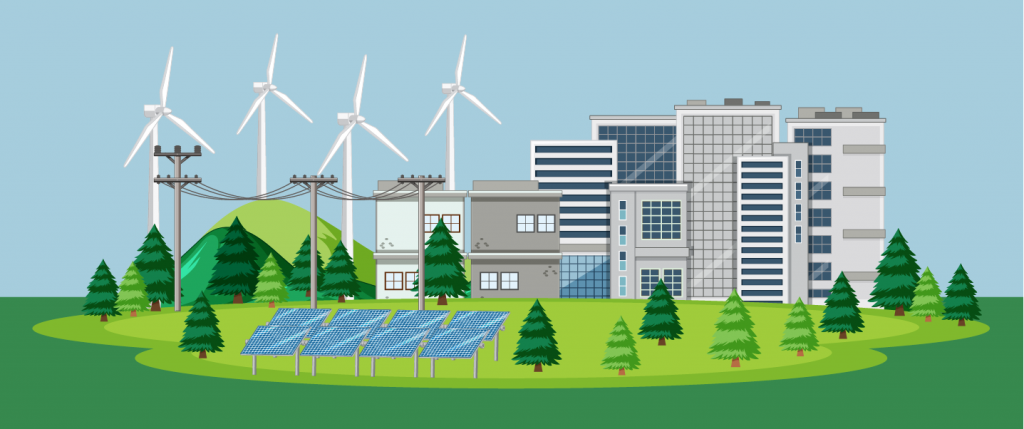Insights
The great Indian bustard and the country’s green energy goals
July 12, 2021The number of Great Indian Bustards (GIB) and Lesser Floricans are on a steady decline and one of the key reasons is the power projects and powerlines criss-crossing their habitat.

A writ petition has been filed before the Supreme Court (SC) which prays for installation of diverters for power transmission lines, prohibition on installation of overhead powerlines, refusal to construct wind energy projects and installation of solar infrastructure in priority and potential habitat area as identified by the Wildlife Institute of India (WII).
Read More+
The Government and other respondents had claimed that the laying of high voltage line underground is not technically feasible due to several factors such as high cost, high downtime to repair failed cable, non-availability of cables at 765 kV level and increase in number of joints with length of run.
On April 19, a three-judge Bench of the SC passed an order directing that all the existing and future transmission lines in the priority and potential areas, whether high voltage or low voltage, to be laid underground. Further, where found feasible, laying such lines underground is to be undertaken within a period of one year and till such time, diverters are required to be installed on such powerlines. This order is to be complied with by every renewable energy developer and licensee whose transmission lines pass through the priority and potential areas in Rajasthan and Gujarat.
Financial hurdles
There are few key issues arising out of the order which are of concern to the developers already struggling with delay in project timelines due to outbreak of Covid-19 and change in law implications due to the imposition of safeguard duty on solar modules. The issues pursuant to this order broadly comprises (a) technical feasibility and potential delay in timelines, and (b) financial feasibility and compensation thereof. The SC has, in its own way, addressed the financial and technical feasibility issues.
The SC acknowledged that there will be financial impact and suggested a few options which can be explored which include providing of funds by the Government, passing the expenses to ultimate consumer subject to approval of the electricity regulatory commissions or mitigating the additional cost in accordance with contractual terms. Therefore, it appears that financial impediment for undertaking such activity cannot be a reason for not undergrounding the cables even as it can be substantially costlier than overhead lines.
On Bustard patrol
Further, the experience from using change in law clause for seeking monetary relief is also not a pleasant one for the developers.
To compound the issue, there are many wind project developers whose power purchase agreement (PPA) does not have the change in law provisions and such developers will have to evaluate other options (under Contract Act) to alleviate the cost impact.
To address the concerns regarding technically feasibility, SC constituted a three-member committee, comprising representatives from MNRE, WII and The Corbett Foundation. If any developer is of the view that it is not technically feasible to lay the transmission lines underground, it is to be referred to the Committee and the Committee will decide on its feasibility. Further, there is no guideline on how this Committee will function, time period for its decision and whether the affected party has the right to challenge the decision. This has led to confusion.
Technical feasibility is a cause of concern as undergrounding of cables will typically include ecological and sociological feasibility for undertaking the construction activity afresh in the affected areas. It is not clear whether the Committee will deal with these issues as well.
While it is expected that the Government will address some of the concerns there is a time aspect to this entire process. The timeline to develop the project is running under the respective PPAs of the developers and there is no relief for such a situation. A quick and robust support from the Government at this stage will help the developers, bring back the confidence of the investors and will also be beneficial for the consumers at large.
This article was originally published in The Hindu Business Line on 12 July 2021 Co-written by: Shashwat Kumar, Partner; Naman Mittal, Associate. Click here for original article
Read Less-
Contributed by: Shashwat Kumar, Partner; Naman Mittal, Associate
Disclaimer
This is intended for general information purposes only. The views and opinions expressed in this article are those of the author/authors and does not necessarily reflect the views of the firm.

